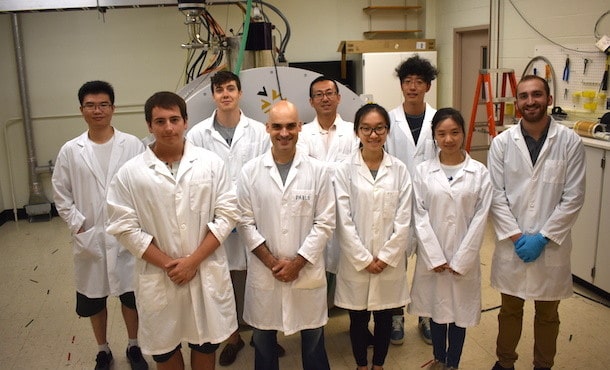he National Institutes of Health awarded Penn State researchers a $1.85 million grant to develop a new way to test if dysfunctions in certain areas of the brain lead to mental health complications and brain disorders. If successful, the research could lead to better mental health treatments.
Like the internet, the brain is a highly inter-connected system. It contains many different sections, known as hub regions, which maintain normal brain function and enable complex behavior. Many mental health experts believe altered brain network properties are an underlying cause of mental illness.
The co-investigators on the grant are Nanyin Zhang, Huck Professor of Brain Imaging in Penn State’s Department of Biomedical Engineering, and Yingwei Mao, associate professor of biology.
“Dysfunction of hub regions has been hypothesized to be a direct cause of altered brain network function and pathophysiology of brain disorders,” said Zhang. “For instance, brain network analysis in patients with Alzheimer’s disease showed that amyloid-beta deposition, clusters of abnormal proteins that are a common sign of Alzheimer’s, were mainly accumulated in functional hubs.”
Testing the hypothesis presents a unique challenge — selectively manipulating brain hub activity and relating its casual impact on brain networks in humans is difficult. Zhang proposes a multi-faceted approach that begins by using cutting-edge tools to manipulate the activity of a hub in animals. Researchers in Zhang’s Translational Neuroimaging and Systems Neuroscience Lab will use resting state functional MRI (fMRI) brain-mapping and monitor behavior in an awake rat model to gauge the impact of the manipulations on brain networks.
“Our lab has built a platform that integrates fMRI, electrophysiology, chemogenetics, optogenetics and animal behavior tests,” Zhang said. “This platform allows us to collect multi-dimensional and multi-scale information in the same awake animal.”
Chemogenetics uses macromolecules to interact with targeted small molecules, and Zhang will use pharmaceuticals known as Designer Receptors Exclusively Activated by Designer Drugs (DREADDs) for this purpose. Optogenetics uses light to control genetically modified neurons. Researchers will apply these techniques to manipulate activity in a brain hub region and measure how the entire brain reconfigures in reaction to the manipulations.
“Using optogenetics, we can manipulate neural activity on the millisecond timescale, and using DREADDs, we can manipulate neural activity on the times scales of hours to days,” Zhang said. “Finally, viewing concurrent electrophysiology-fMRI images will allow us to directly relate brain network and behavioral changes to their neural basis in the brain hub.”
In the first phase of the study, Zhang and his team will document changes in brain network properties caused by suppressing a brain hub. By using DREADDs, the team will examine the role of manual stimulation to a hub in brain network dynamics. They will then work to understand the relationship between activity of the network hub and specific brain function and then determine the functional role of each hub and related behaviors in rats. Finally, they will study the impact of constant suppression of a hub on long-term brain network reorganization and resultant behavior.
“This research is important because it will elucidate the causal relationship between short-term and long-term dysfunction of a hub and brain network reconfigurations,” Zhang said. “This in turn will help us understand the cause of large-scale brain network changes observed in numerous brain disorders and enable better treatments thanks to this new knowledge.”


